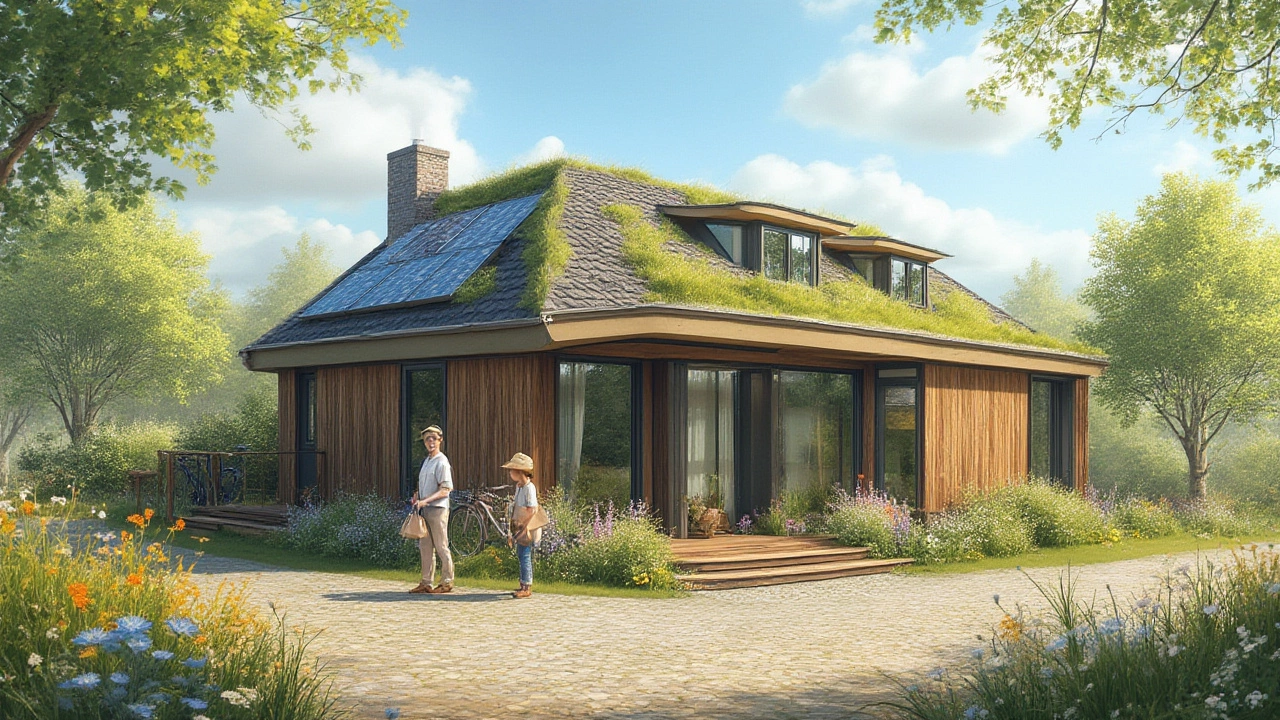Eco House Price Guide – What You Need to Know
Everyone talks about eco homes, but the big question is: how much do they really cost? In the UK, a green house can be cheaper, more expensive, or somewhere in the middle, depending on what you choose. This guide breaks down the main price drivers, shows typical cost brackets, and gives practical tips to stretch your budget without sacrificing sustainability.
What Factors Set the Price?
Location is the first driver. A plot in a rural Lancashire village will usually cost less than a city lot, even if both are built to the same eco standard. Next comes size – a 150‑square‑metre eco cottage will cost more than a compact 80‑square‑metre cabin, simply because you need more materials and labor.
Materials matter a lot. High‑performance insulation, triple‑glazed windows, and renewable timber can raise the bill, but they also lower running costs. If you opt for recycled bricks or reclaimed wood, the upfront price often drops, but you may need extra time to source them.
Energy systems are another big piece. Solar panels, heat‑pump boilers, and battery storage add to the initial spend but can shave hundreds of pounds off yearly energy bills. Grants and the UK Green Homes Grant can cover part of these costs, so always check what’s available before you decide.
Certification also influences price. A Passivhaus rating or BREEAM certification requires strict testing and documentation, which means extra fees. However, certified homes often sell for a premium, so you might recoup the investment later.
Typical Price Ranges in the UK
For a basic eco retrofit on an existing cottage – think insulation and low‑energy lighting – expect to spend £15,000‑£30,000. A full new build with standard green features (good insulation, double‑glazing, solar hot water) usually lands between £150,000 and £250,000, depending on size and location.
If you go for high‑end specifications – Passivhaus standards, full solar PV, battery storage – the cost can rise to £300,000‑£400,000 for a 150‑square‑metre house. Remember, these numbers are averages; each project will vary.
How to Keep Costs Down
Start small. Upgrade the envelope first – add insulation, seal drafts, install energy‑efficient windows. These moves give you the biggest savings for the least money.
Use locally sourced, reclaimed, or recycled materials. A reclaimed timber floor may cost less than new hardwood and adds character. Talk to local demolition sites or timber merchants – they often have leftovers that are perfect for an eco build.
Phase your technology. Install solar panels later, after you’ve saved on the basic build. Many installers let you add panels in a second phase without major re‑work.
Take advantage of incentives. The UK government offers tax relief for energy‑saving measures, and many councils have grant schemes for solar or heat‑pump installations. Check the latest offers before you sign a contract.
Design for simplicity. A compact floor plan reduces foundation size, roofing area, and material waste. The simpler the shape, the cheaper the build.
Finally, work with a builder who knows eco construction. Experienced teams avoid costly mistakes, optimize material use, and can suggest low‑cost alternatives you might not think of.
Eco houses are not a one‑size‑fits‑all price tag. By understanding the key cost drivers and planning smartly, you can create a sustainable home that fits your budget and still delivers the energy savings you want.

Eco-Friendly House Costs: What You Really Pay for Sustainable Living
Thinking of building or buying an eco-friendly house? Here's what you need to know about the real costs, hidden savings, and surprising facts about green homes in 2025.
Continue Reading